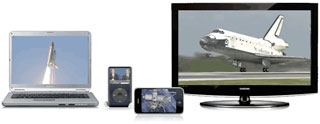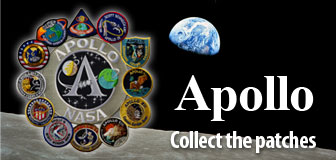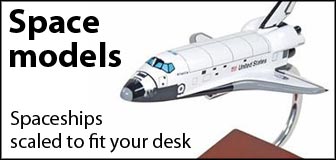European Earth observing craft prepared for launch
BY STEPHEN CLARK
SPACEFLIGHT NOW
Posted: April 1, 2014

Europe's first Sentinel satellite is ready for liftoff Thursday to begin the deployment of a multi-billion dollar Earth observing system designed to relay near-constant data on the planet's land surfaces, oceans and atmosphere to scientists and security officials.
The Sentinel 1A spacecraft, which weighs about 4,755 pounds with a full load of fuel, is mounted on top of a Soyuz rocket for launch at 2102:26 GMT (5:02:26 p.m. EDT; 6:02:26 p.m. local time) from the Guiana Space Center.
It will mark the seventh flight of the venerable Russian rocket from a European-owned launch pad near the town of Sinnamary, French Guiana, on South America's northern Atlantic coastline.
The spacecraft was transported to the launch pad Monday for lifting inside the facility's 170-foot-tall (52-meter) mobile service gantry. Technicians then carefully attached the satellite, along with the rocket's Fregat-M upper stage and 13.5-foot-diameter (4.1-meter) payload fairing, on top of the Soyuz rocket's third stage.
The rocket will boost Sentinel 1A into a 430-mile (693-kilometer) orbit with an inclination of 98.2 degrees.
Built by Thales Alenia Space of France and Italy, Sentinel 1A is fitted with a C-band synthetic aperture radar to take images of Earth's surface regardless of weather or lighting conditions. The day-and-night imaging capability will allow the satellite to map urban areas, track movements of sea ice, monitor oil spills, and watch agricultural growth.
An identical satellite is scheduled for launch in 2015 to permit global observations every six days.
These images show Sentinel 1A's mounting atop the Russian Fregat-M upper stage, encapsulation inside the Soyuz rocket's ST-type aerodynamic fairing, and transfer to the Soyuz launch pad in the northwest part of the Guiana Space Center.
See our Mission Status Center for the latest news on the mission.
 Photo credit: ESA/CNES/Arianespace - Photo Optique Video du CSG - JM Guillon
Photo credit: ESA/CNES/Arianespace - Photo Optique Video du CSG - JM Guillon
 Photo credit: ESA/CNES/Arianespace - Photo Optique Video du CSG - JM Guillon
Photo credit: ESA/CNES/Arianespace - Photo Optique Video du CSG - JM Guillon
 Photo credit: ESA/CNES/Arianespace - Photo Optique Video du CSG - JM Guillon
Photo credit: ESA/CNES/Arianespace - Photo Optique Video du CSG - JM Guillon
 Photo credit: ESA/CNES/Arianespace - Photo Optique Video du CSG - JM Guillon
Photo credit: ESA/CNES/Arianespace - Photo Optique Video du CSG - JM Guillon
 Photo credit: ESA/CNES/Arianespace - Photo Optique Video du CSG - JM Guillon
Photo credit: ESA/CNES/Arianespace - Photo Optique Video du CSG - JM Guillon
 Photo credit: ESA/CNES/Arianespace - Photo Optique Video du CSG - JM Guillon
Photo credit: ESA/CNES/Arianespace - Photo Optique Video du CSG - JM Guillon
 Photo credit: ESA/CNES/Arianespace - Photo Optique Video du CSG - JM Guillon
Photo credit: ESA/CNES/Arianespace - Photo Optique Video du CSG - JM Guillon
 Photo credit: ESA/CNES/Arianespace - Photo Optique Video du CSG - JM Guillon
Photo credit: ESA/CNES/Arianespace - Photo Optique Video du CSG - JM Guillon
 Photo credit: ESA/CNES/Arianespace - Photo Optique Video du CSG - JM Guillon
Photo credit: ESA/CNES/Arianespace - Photo Optique Video du CSG - JM Guillon
 Photo credit: ESA/CNES/Arianespace - Photo Optique Video du CSG - S. Martin
Photo credit: ESA/CNES/Arianespace - Photo Optique Video du CSG - S. Martin
 Photo credit: ESA/CNES/Arianespace - Photo Optique Video du CSG - S. Martin
Photo credit: ESA/CNES/Arianespace - Photo Optique Video du CSG - S. Martin
 Photo credit: ESA/CNES/Arianespace - Photo Optique Video du CSG - S. Martin
Photo credit: ESA/CNES/Arianespace - Photo Optique Video du CSG - S. Martin
 Photo credit: ESA/S. Corvaja
Photo credit: ESA/S. Corvaja
 Photo credit: ESA/CNES/Arianespace - Photo Optique Video du CSG - S. Martin
Photo credit: ESA/CNES/Arianespace - Photo Optique Video du CSG - S. Martin
 Photo credit: ESA/CNES/Arianespace - Photo Optique Video du CSG - S. Martin
Photo credit: ESA/CNES/Arianespace - Photo Optique Video du CSG - S. Martin
 Photo credit: ESA/S. Corvaja
Photo credit: ESA/S. Corvaja
 Photo credit: ESA/CNES/Arianespace - Photo Optique Video du CSG - S. Martin
Photo credit: ESA/CNES/Arianespace - Photo Optique Video du CSG - S. Martin
 Photo credit: ESA/CNES/Arianespace - Photo Optique Video du CSG - S. Martin
Photo credit: ESA/CNES/Arianespace - Photo Optique Video du CSG - S. Martin
 Photo credit: ESA/S. Corvaja
Photo credit: ESA/S. Corvaja
 Photo credit: ESA/CNES/Arianespace - Photo Optique Video du CSG - S. Martin
Photo credit: ESA/CNES/Arianespace - Photo Optique Video du CSG - S. Martin
 Photo credit: ESA/CNES/Arianespace - Photo Optique Video du CSG - S. Martin
Photo credit: ESA/CNES/Arianespace - Photo Optique Video du CSG - S. Martin
 Photo credit: ESA/S. Corvaja
Photo credit: ESA/S. Corvaja
 Photo credit: ESA/S. Corvaja
Photo credit: ESA/S. Corvaja
|


 Photo credit: ESA/CNES/Arianespace - Photo Optique Video du CSG - JM Guillon
Photo credit: ESA/CNES/Arianespace - Photo Optique Video du CSG - JM Guillon Photo credit: ESA/CNES/Arianespace - Photo Optique Video du CSG - JM Guillon
Photo credit: ESA/CNES/Arianespace - Photo Optique Video du CSG - JM Guillon Photo credit: ESA/CNES/Arianespace - Photo Optique Video du CSG - JM Guillon
Photo credit: ESA/CNES/Arianespace - Photo Optique Video du CSG - JM Guillon Photo credit: ESA/CNES/Arianespace - Photo Optique Video du CSG - JM Guillon
Photo credit: ESA/CNES/Arianespace - Photo Optique Video du CSG - JM Guillon Photo credit: ESA/CNES/Arianespace - Photo Optique Video du CSG - JM Guillon
Photo credit: ESA/CNES/Arianespace - Photo Optique Video du CSG - JM Guillon Photo credit: ESA/CNES/Arianespace - Photo Optique Video du CSG - JM Guillon
Photo credit: ESA/CNES/Arianespace - Photo Optique Video du CSG - JM Guillon Photo credit: ESA/CNES/Arianespace - Photo Optique Video du CSG - JM Guillon
Photo credit: ESA/CNES/Arianespace - Photo Optique Video du CSG - JM Guillon Photo credit: ESA/CNES/Arianespace - Photo Optique Video du CSG - JM Guillon
Photo credit: ESA/CNES/Arianespace - Photo Optique Video du CSG - JM Guillon Photo credit: ESA/CNES/Arianespace - Photo Optique Video du CSG - JM Guillon
Photo credit: ESA/CNES/Arianespace - Photo Optique Video du CSG - JM Guillon Photo credit: ESA/CNES/Arianespace - Photo Optique Video du CSG - S. Martin
Photo credit: ESA/CNES/Arianespace - Photo Optique Video du CSG - S. Martin Photo credit: ESA/CNES/Arianespace - Photo Optique Video du CSG - S. Martin
Photo credit: ESA/CNES/Arianespace - Photo Optique Video du CSG - S. Martin Photo credit: ESA/CNES/Arianespace - Photo Optique Video du CSG - S. Martin
Photo credit: ESA/CNES/Arianespace - Photo Optique Video du CSG - S. Martin Photo credit: ESA/S. Corvaja
Photo credit: ESA/S. Corvaja Photo credit: ESA/CNES/Arianespace - Photo Optique Video du CSG - S. Martin
Photo credit: ESA/CNES/Arianespace - Photo Optique Video du CSG - S. Martin Photo credit: ESA/CNES/Arianespace - Photo Optique Video du CSG - S. Martin
Photo credit: ESA/CNES/Arianespace - Photo Optique Video du CSG - S. Martin Photo credit: ESA/S. Corvaja
Photo credit: ESA/S. Corvaja Photo credit: ESA/CNES/Arianespace - Photo Optique Video du CSG - S. Martin
Photo credit: ESA/CNES/Arianespace - Photo Optique Video du CSG - S. Martin Photo credit: ESA/CNES/Arianespace - Photo Optique Video du CSG - S. Martin
Photo credit: ESA/CNES/Arianespace - Photo Optique Video du CSG - S. Martin Photo credit: ESA/S. Corvaja
Photo credit: ESA/S. Corvaja Photo credit: ESA/CNES/Arianespace - Photo Optique Video du CSG - S. Martin
Photo credit: ESA/CNES/Arianespace - Photo Optique Video du CSG - S. Martin Photo credit: ESA/CNES/Arianespace - Photo Optique Video du CSG - S. Martin
Photo credit: ESA/CNES/Arianespace - Photo Optique Video du CSG - S. Martin Photo credit: ESA/S. Corvaja
Photo credit: ESA/S. Corvaja Photo credit: ESA/S. Corvaja
Photo credit: ESA/S. Corvaja
